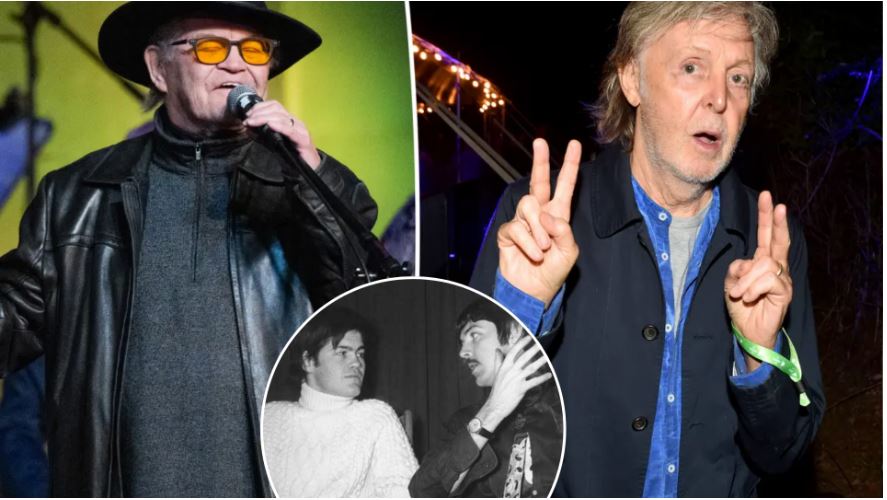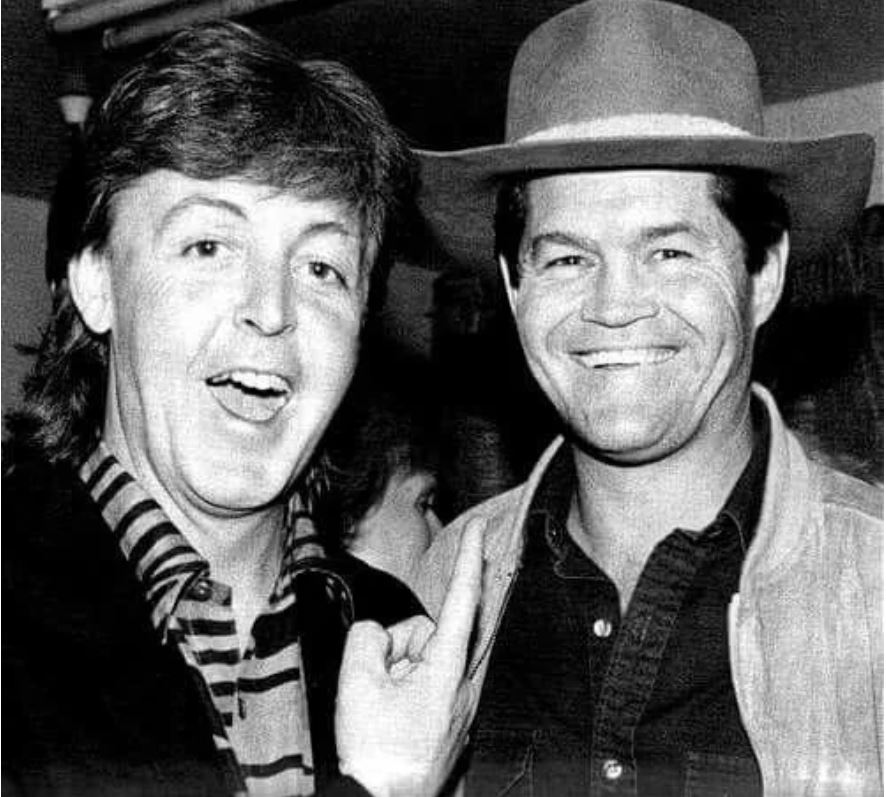
In the golden era of 1960s rock music, few stories capture the magic and mystique of the time quite like Micky Dolenz’s first meeting with Paul McCartney. As the iconic drummer of The Monkees, Dolenz had already achieved fame, yet his encounter with McCartney, one of the greatest musical legends of the 20th century, left an indelible mark on him. Reflecting on this experience, Dolenz often describes it as “like meeting Mozart,” a fitting tribute to the surreal nature of meeting someone whose talent and influence shaped a generation.
A Historic Encounter in 1960s England
During a press trip to England in the mid-1960s, Micky Dolenz had the unique opportunity to be invited to Paul McCartney’s home for dinner. This invitation alone was a remarkable gesture, as The Beatles were already at the pinnacle of their global fame, and Dolenz was considered part of the emerging wave of American pop-rock. The evening was informal yet unforgettable, highlighting the personal side of McCartney that few fans ever witnessed. The intimate gathering included McCartney’s beloved sheepdog, Martha, a nod to the famous Beatles’ song “Martha My Dear.” This personal touch set the tone for a memorable night, blending the casual warmth of home life with the electrifying aura of rock royalty.
Abbey Road Studios: A Legendary Visit
The following day, Dolenz was granted access to Abbey Road Studios, the iconic recording space where The Beatles were working on what would become the legendary album Sgt. Pepper’s Lonely Hearts Club Band. For Dolenz, this was a dream-come-true moment. Expecting the chaos of a bustling studio, he was instead greeted by the serene focus of John Lennon, George Harrison, Ringo Starr, and Paul McCartney under the stark fluorescent lighting of the studio.
Dolenz’s impressions of the studio visit illustrate the contrast between expectation and reality. Rather than the noisy, crowded environment typical of recording sessions, he found a concentrated, almost sacred atmosphere, underscoring the professionalism and dedication that defined The Beatles’ work ethic. This visit provided a rare glimpse into the creative process of one of the most influential bands in history.
John Lennon’s Playful Welcome
As Dolenz navigated the studio, he was met with a warm, playful greeting from John Lennon, who instantly nicknamed him “Monkee Man.” This simple gesture reflected the camaraderie and mutual respect between artists of the era. For Dolenz, the nickname became a lasting symbol of the connection forged that day—a reminder of the lighthearted yet profound interactions that often accompany musical genius. The playful exchange also illustrated the human side of The Beatles, showing that even global icons could engage with their peers with humor and friendliness.
“Like Meeting Mozart”: Dolenz’s Reflection

Dolenz frequently recalls the encounter with McCartney as “like meeting Mozart.” This analogy is particularly striking, as it conveys the awe, reverence, and near-spiritual impact that such a meeting can have on an artist. Meeting McCartney was not just a casual encounter; it was an educational and inspirational moment, allowing Dolenz to witness firsthand the creativity, discipline, and innovation that drove The Beatles’ music.
The remark also underscores the lasting influence of The Beatles on Dolenz’s own musical journey. Observing McCartney’s approach to composition and performance provided insights that would shape Dolenz’s work with The Monkees, enriching his understanding of melody, harmony, and the meticulous attention to musical detail.
The Significance of Musical Camaraderie
This story highlights a broader theme of the 1960s music scene: the mutual respect and camaraderie between pioneering artists. While The Monkees and The Beatles operated in different cultural and commercial contexts—one American, one British—their paths converged in a meaningful exchange of creativity and admiration. Such encounters were more than fan moments; they represented a cross-pollination of ideas, a blending of perspectives that would influence the evolution of pop and rock music for decades.
Behind the Scenes of 1960s Rock Legends
Understanding the significance of Dolenz’s encounter requires recognizing the context of the 1960s music industry. The Beatles were experimenting with studio techniques, innovative recording methods, and complex musical arrangements that were revolutionary for their time. Visiting Abbey Road Studios, Dolenz was exposed to these cutting-edge practices. Observing the band’s process offered a firsthand education in studio artistry, collaborative composition, and the meticulous attention to sonic detail that characterized The Beatles’ sound.
Moreover, Dolenz’s perspective as an American musician provided an interesting lens on British pop innovation. His observations bridged two worlds: the polished, commercially oriented American pop scene and the experimental, artistically ambitious British rock movement. This intersection enriched both his musical vocabulary and his appreciation for the global reach of music.
Personal Stories That Inspire Generations
Stories like Dolenz’s encounter with McCartney are more than historical anecdotes; they serve as inspirational narratives for musicians and fans alike. They humanize legendary figures, revealing the moments of warmth, humor, and connection that exist behind the public persona. For aspiring artists, Dolenz’s reflections provide valuable lessons in humility, curiosity, and openness to creative collaboration. Meeting a genius like McCartney is not just about fandom—it’s about learning, observing, and growing as a musician.
A Lasting Legacy of Respect and Admiration
The lasting impact of this meeting is evident in Dolenz’s continued references to it in interviews and public talks. His description of the experience as “like meeting Mozart” captures both the emotional weight and the artistic significance of the encounter. Beyond personal nostalgia, it also reflects the broader legacy of The Beatles’ influence on American pop music, demonstrating how cross-continental interactions helped shape the modern musical landscape.
This encounter is a reminder that even brief interactions between legendary artists can yield insights, inspiration, and lifelong memories. The respect and admiration shared between Dolenz and McCartney exemplify how music transcends boundaries, fostering connections that extend beyond commercial success or celebrity status.
Conclusion: A Defining Moment in Music History
Micky Dolenz’s first encounter with Paul McCartney remains a defining moment in the history of pop and rock music. From the intimate dinner at McCartney’s home to the surreal visit to Abbey Road Studios, every detail highlights the extraordinary nature of this meeting. The playful nickname from John Lennon, the focused energy of the studio, and the profound awe expressed by Dolenz all contribute to a story that resonates with music enthusiasts across generations.
In retrospect, the encounter exemplifies the intertwining of talent, inspiration, and personal connection that defined the 1960s music revolution. Dolenz’s reflections serve as a timeless reminder of the power of music to inspire, connect, and elevate both artists and audiences alike. For fans of The Monkees, The Beatles, and 1960s pop culture, this story remains an essential piece of musical history—an unforgettable glimpse into the life, creativity, and camaraderie of rock legends at the height of their powers.
